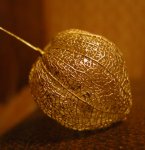Kenom
0
- Joined
- May 4, 2007
- Messages
- 5,629
- Points
- 63
I think the biggest headache I've run into with these type hosts is there's no direct connection from the driver to the battery so like in the dorcy jr setup you have to solder the driver to the remaining board at the top of the battery (what used to be the original led driver) then from there to the diode. It leaves a wire trail from the bottom to the head and as such must make the heatsink diode assembly remain stable while you twist the head back onto the battery section.
Now the way I did mine in the dorcy Jr. host was to still utilize the spring and plastic holder to make contact with the old driver and transfer the juice to the flexdrive. It allows for removing the head without damaging the driver components or wires. But, it's been my experience that it is VERY easy to twist the head off and twist the wires as well thereby shearing off the diode pins.
Now the way I did mine in the dorcy Jr. host was to still utilize the spring and plastic holder to make contact with the old driver and transfer the juice to the flexdrive. It allows for removing the head without damaging the driver components or wires. But, it's been my experience that it is VERY easy to twist the head off and twist the wires as well thereby shearing off the diode pins.






